We are back! Hey everyone. It’s Hannah here again for another diurnal raptor banding season with Nick.
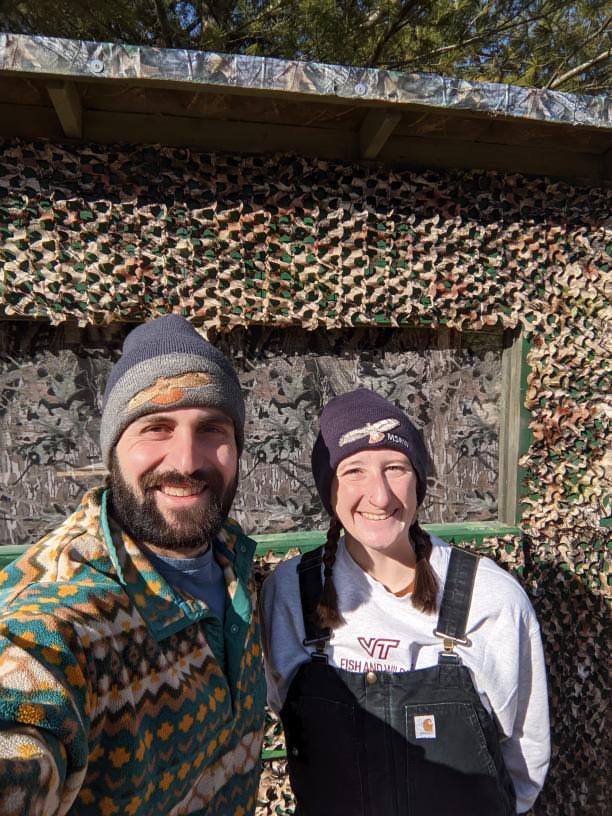
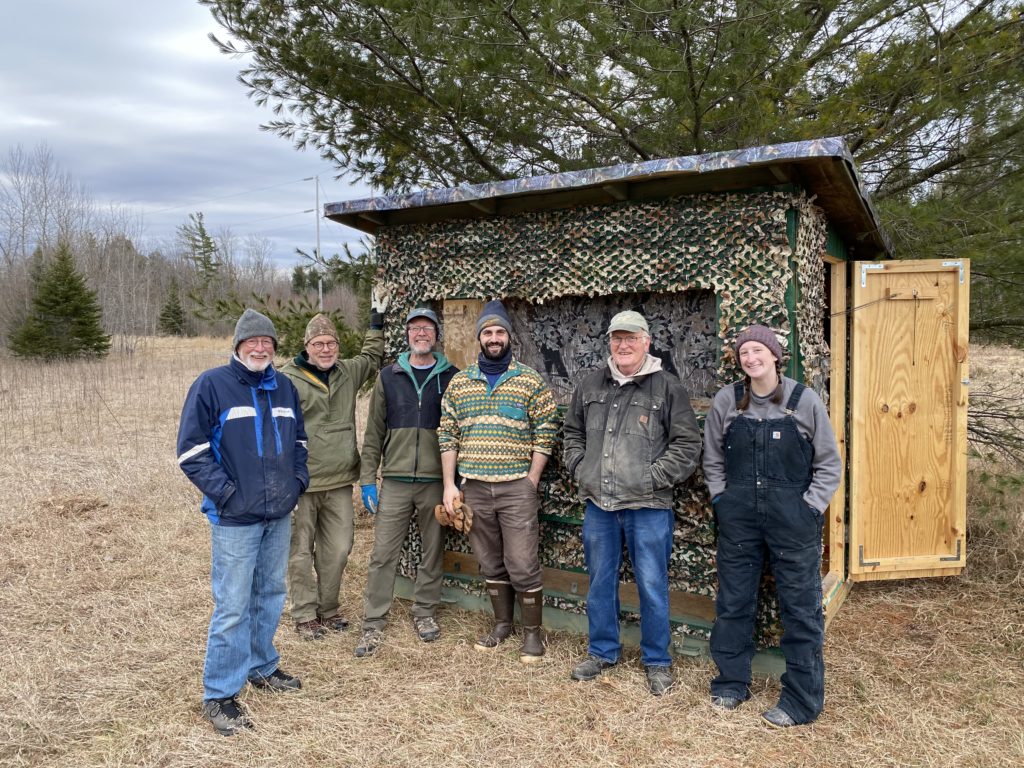
Left: Nick and I on the first day of trapping (April 1st) Right: All of the amazing board members who helped us set up the blind this spring (John Merrill, Bert Ebbers, Jeff Dykehouse, Nick Alioto, Ed Pike, Hannah Glass; not pictured: Scott Davis)
Our first week has been interesting thanks to the weather. We started out with cold weather, which turned to a few days of rain/ wintry mix. Due to this, we were unable to get out to the blind for 1.5 days. However, we have still managed to have a successful start. Any guesses on what our first raptor of the season was? Well, if you guessed a Red-tailed Hawk (RTHA), you would be correct! It was a fitting way to start the season for sure.
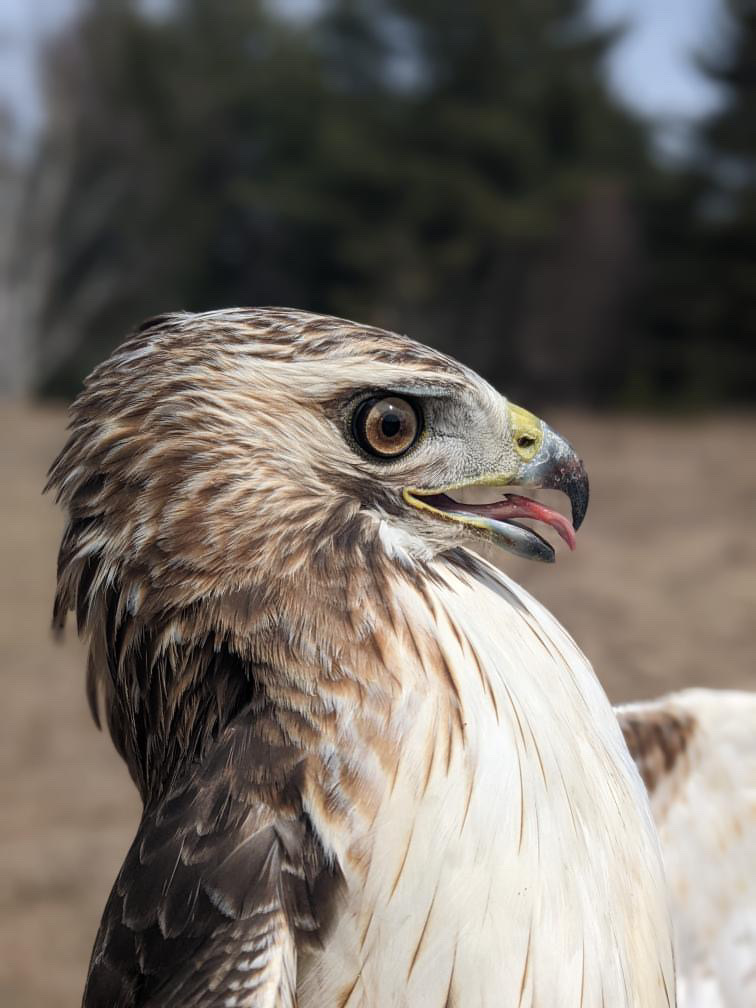
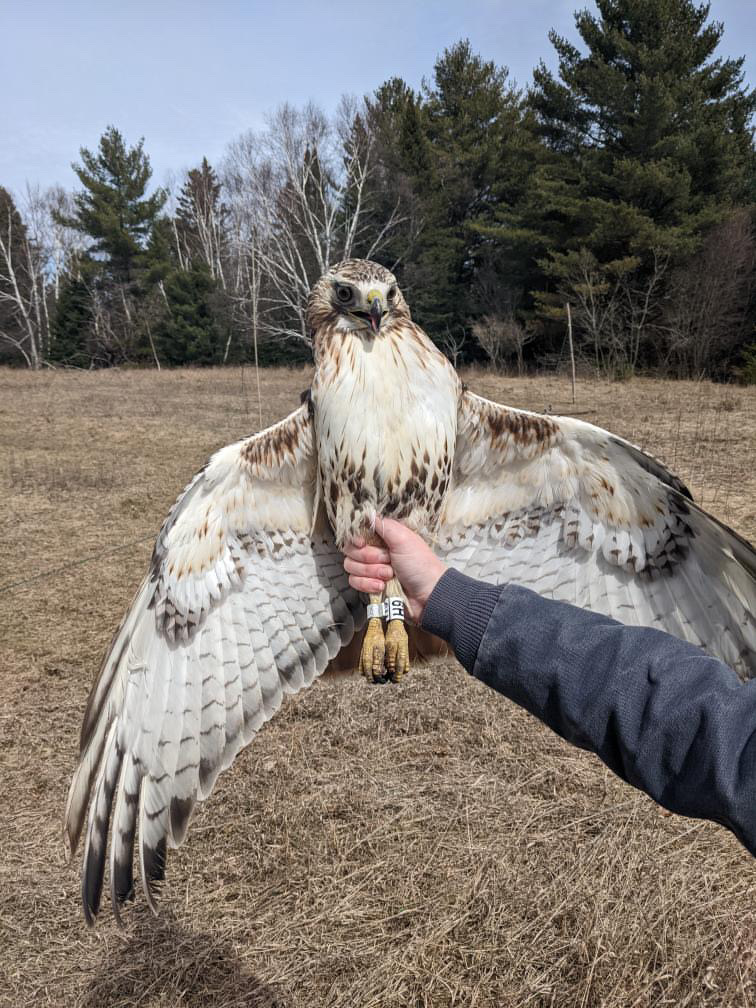
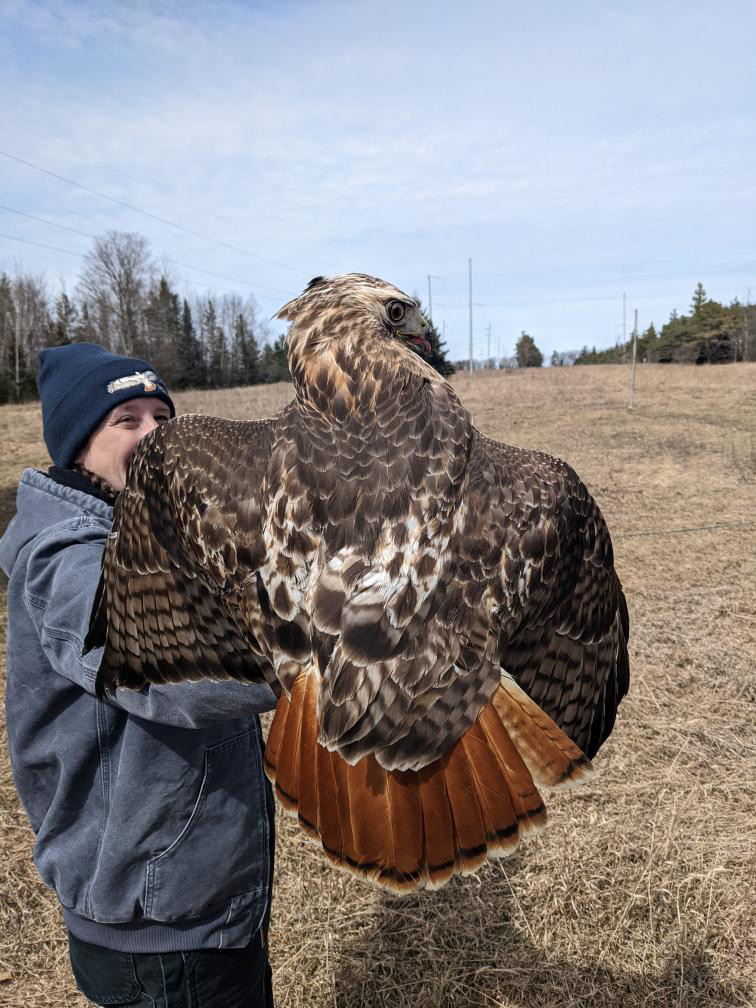
Pictured above: our first raptor of the season; a third year (TY) RTHA
Later in the week we were pleased to band our first Northern Harrier (NOHA) of the season. It also happened to be an adult male aka Gray Ghost. They are truly stunning birds with their sleek gray plumage and black wingtips that stand out when they are flying. We also banded our first Cooper’s Hawk (COHA), which is always exciting as we do not band too many of these accipiters here. This COHA in particular came in with a full crop. Check out the picture below to see!
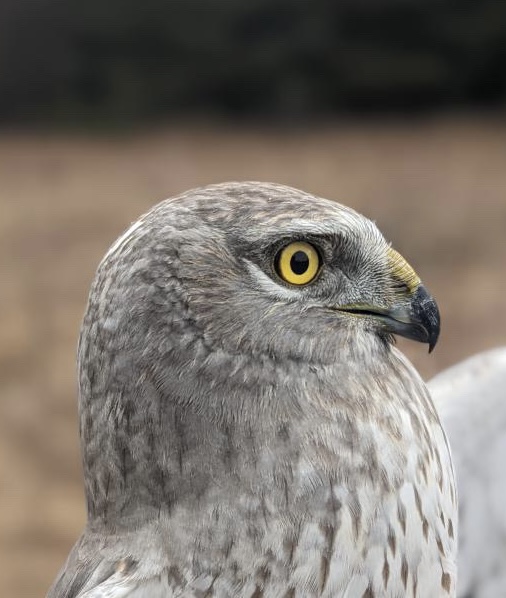
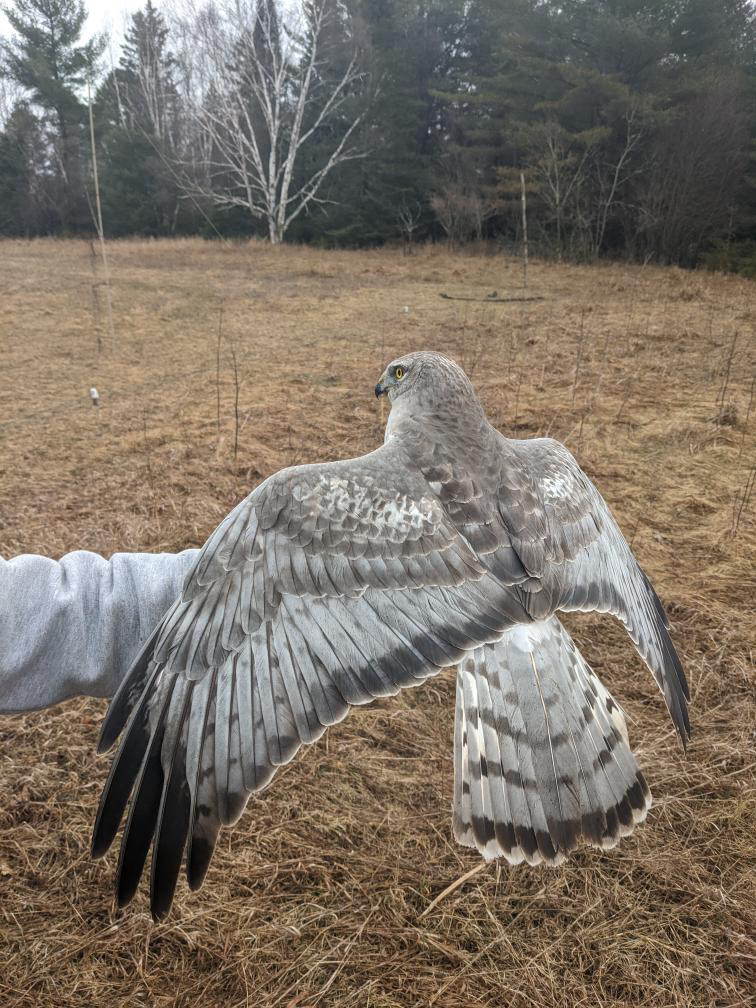
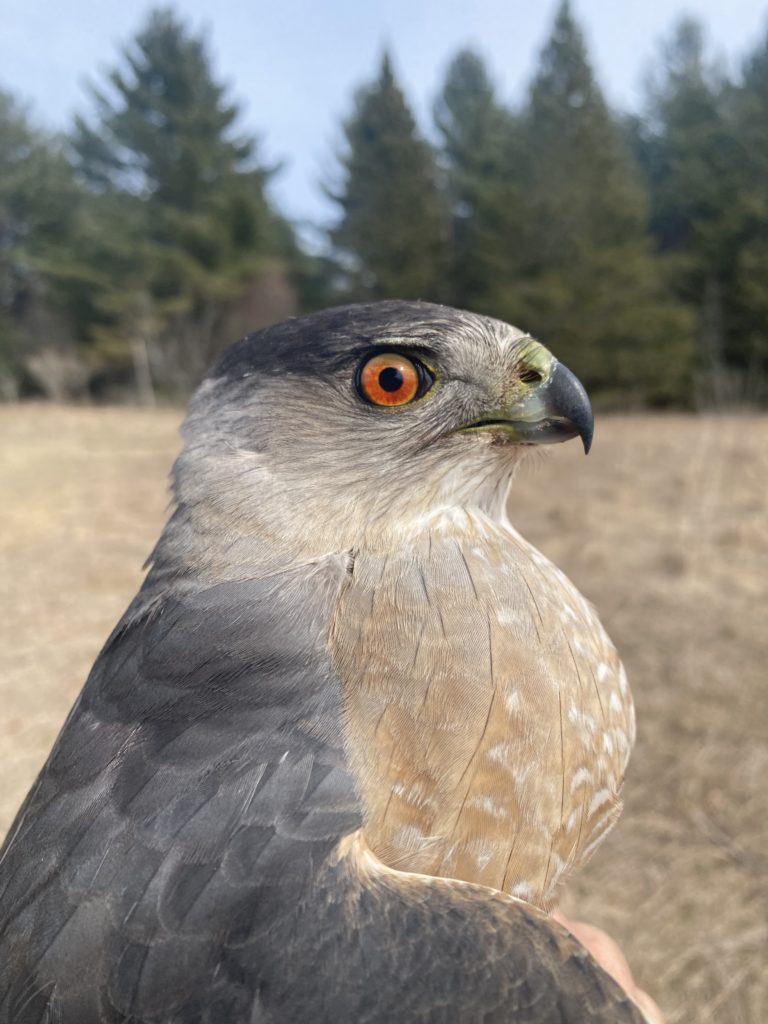
Pictured above: adult male NOHA and adult COHA with a full crop
If you have kept up with Nick’s research through the years, you know that he is studying the migration of RTHA through the Straits, focusing on the northern subspecies, Buteo jamaicensis abieticola. This last week has brought us a plethora of this subspecies. Some ways to differentiate these RTHA from other subspecies, although there is quite a bit of variation, can include a large, dark belly band, caramel streaking on the throat, globular, red breast streaks, dark patagials, dark cheeks, dark scapulars, and a thick subterminal band. Here are some examples below:
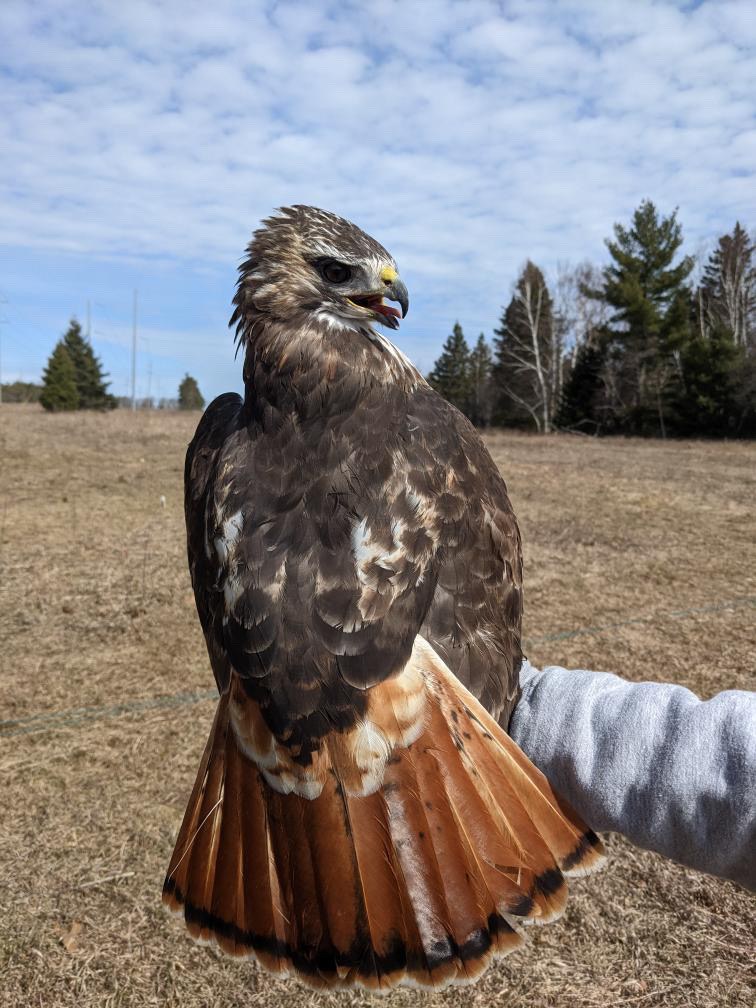
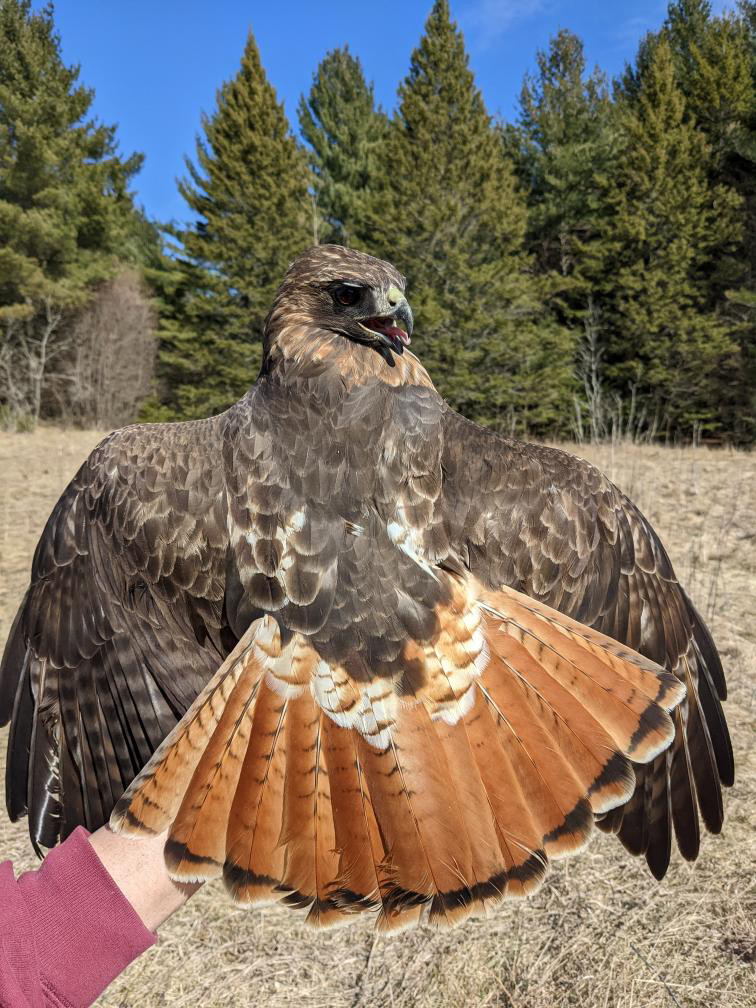
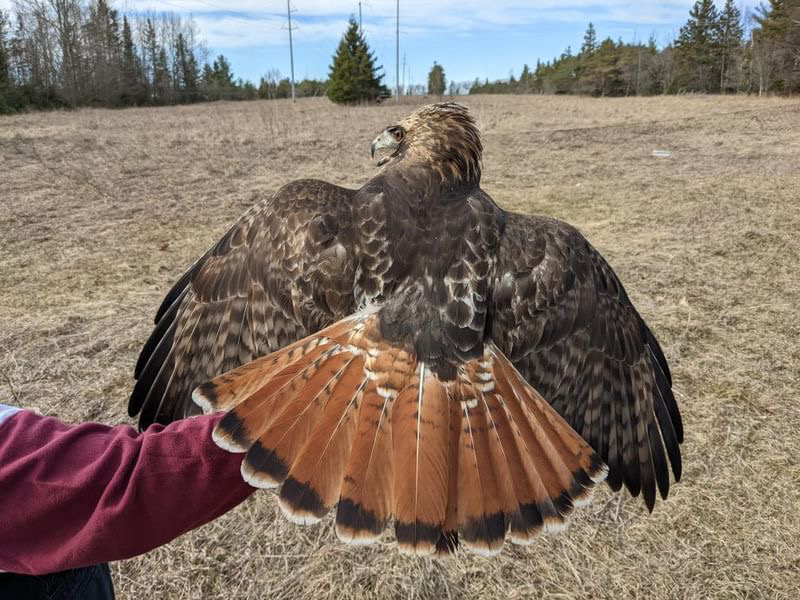
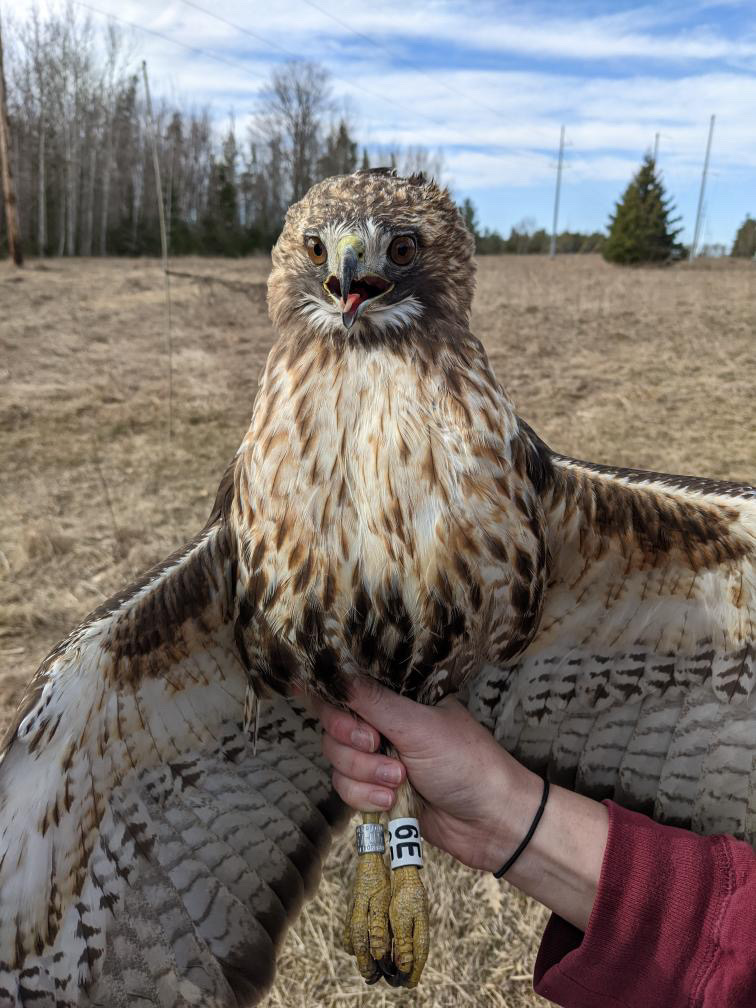
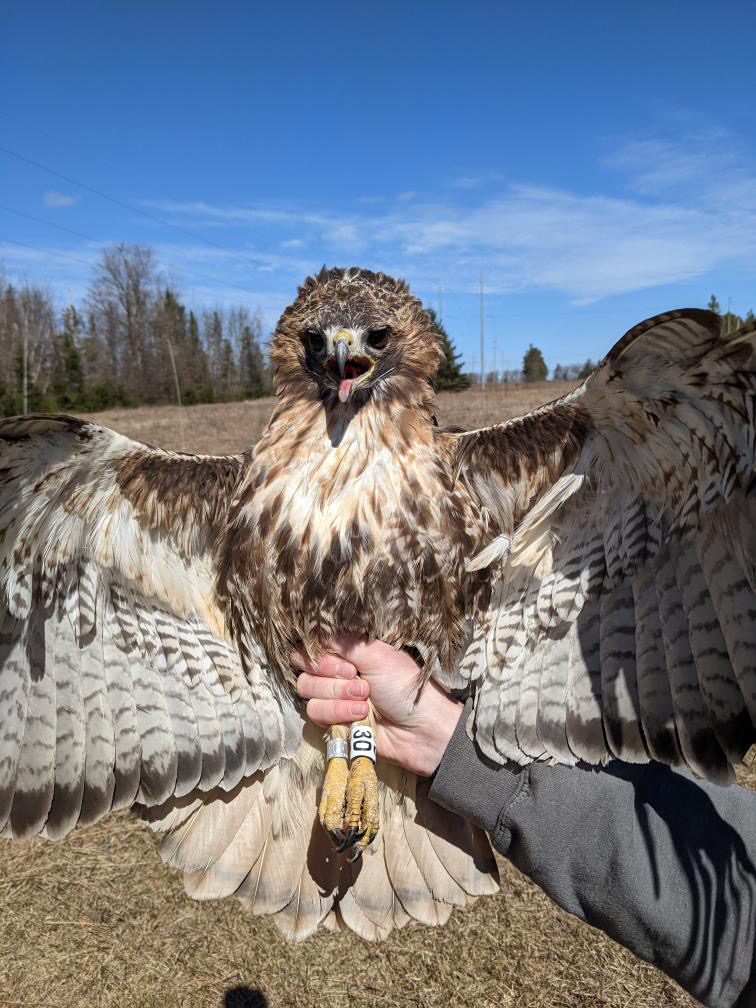
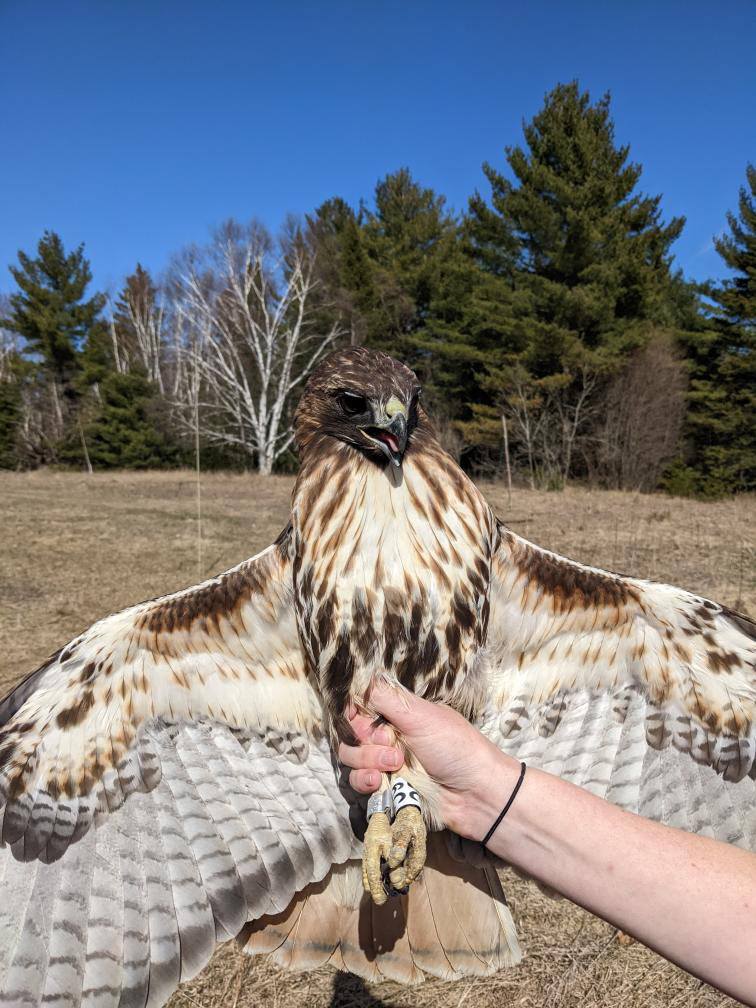
Pictured above: examples of the abieticola subspecies of RTHA
As I am sure most of you know, today, April 8th, was the day of the total solar eclipse. While we did not experience the full eclipse here in Mackinaw City, the sky did darken quite a bit. Where minutes before the sky held kettles of raptors, they quickly dissipated as the birds descended into the trees, seemingly to roost for the night. It was incredible to see how this event affected the birds’ routine. After about half an hour, the raptors rose from the trees again, as if realizing that it was not in fact time to roost. However, at that time it was too late for the raptors to attempt to cross the Straits, so we got to watch them soar on thermals for the rest of the afternoon. Fingers crossed for another successful upcoming week!
Our totals for the season are as follows:
Red-tailed Hawks: 21
Northern Harriers: 1
Cooper’s Hawks: 1
Sharp-shinned Hawks: 9
Total: 32

